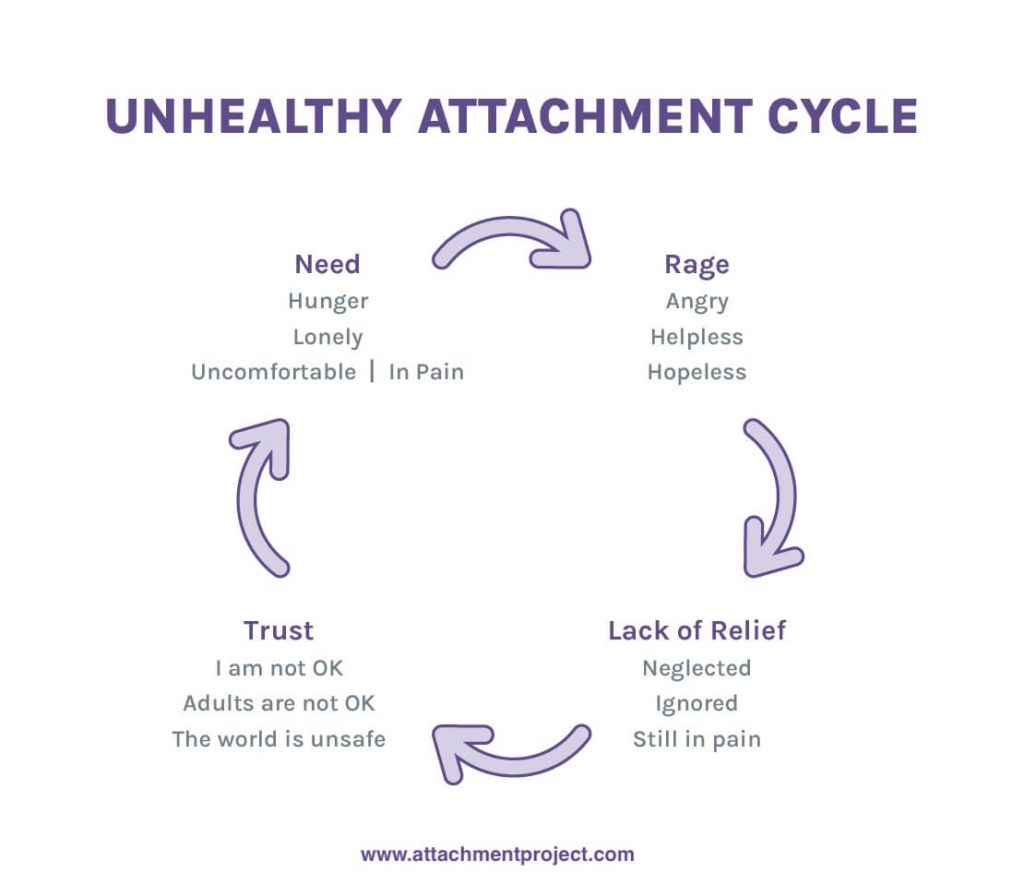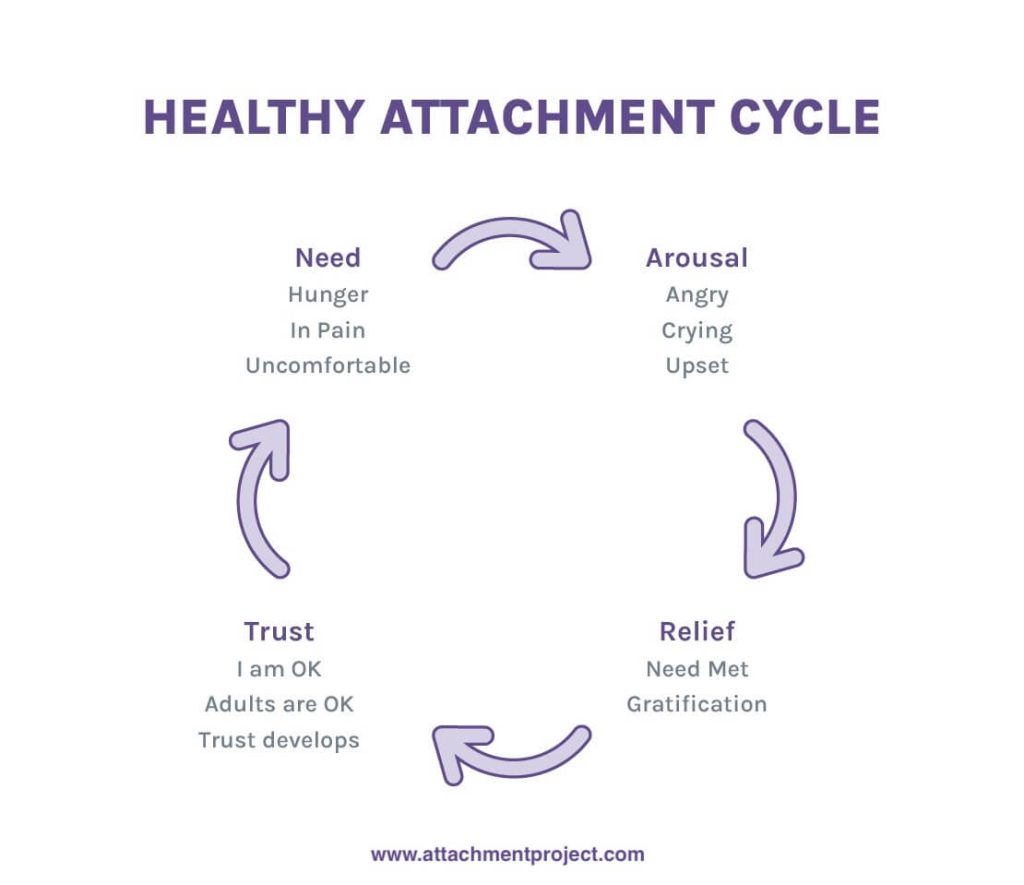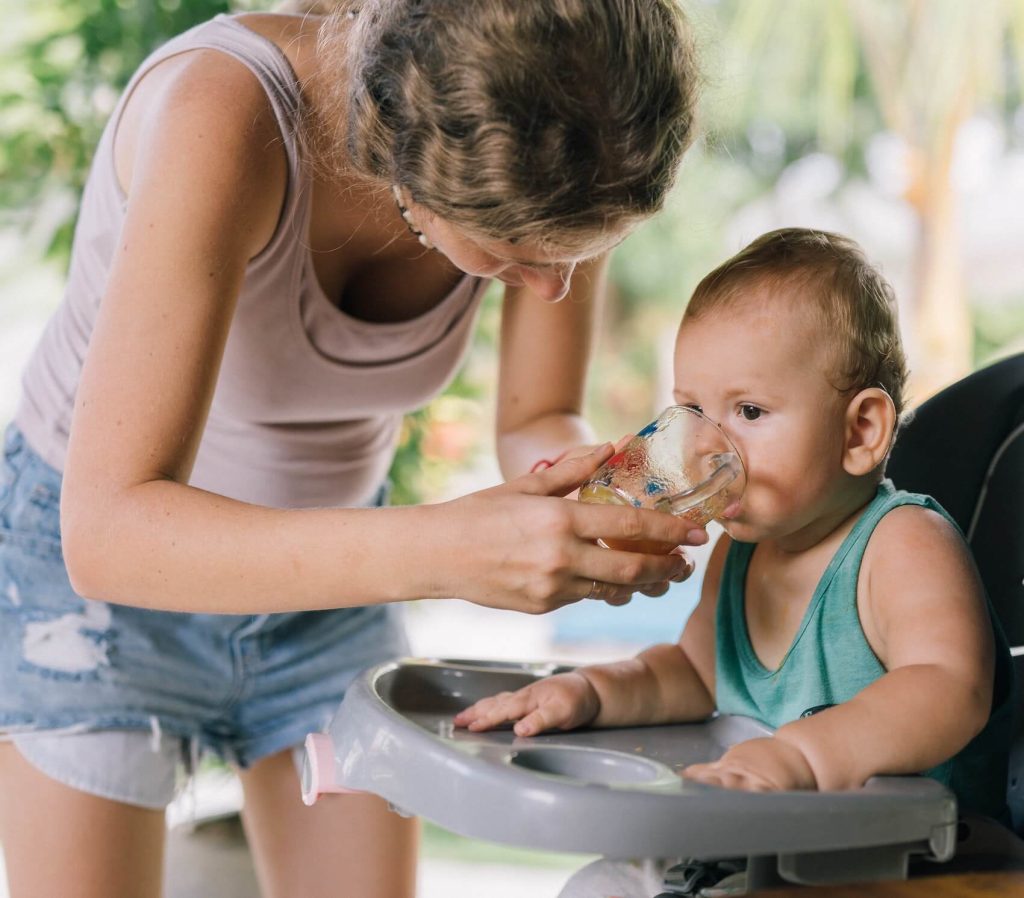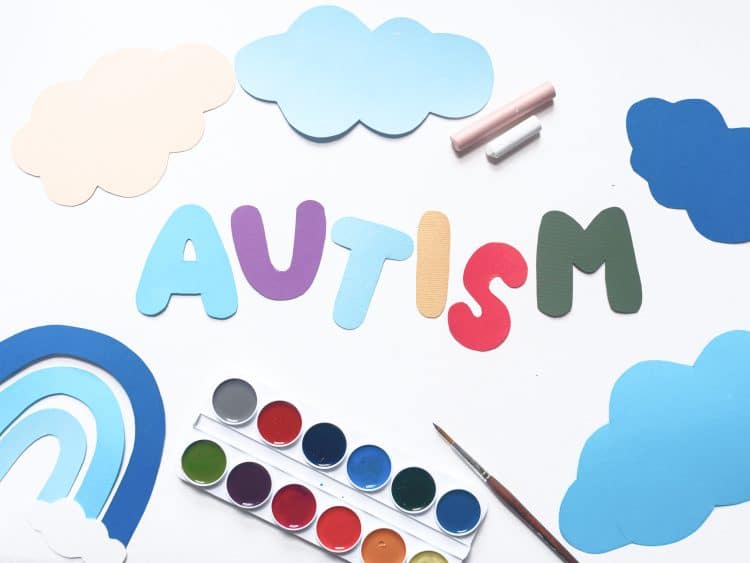What Is Anxious Ambivalent Attachment and What Causes It?

Published on May 25, 2021 Updated on June 16, 2023
Known as anxious preoccupied attachment in adulthood, anxious ambivalent attachment typically develops in children in the first 18 months of life.
During this formative period, a child’s caregiver may have acted nurturing and responsive one minute and unavailable or insensitive the next.
This article will cover your top questions on anxious ambivalent attachment in childhood including:
- When and how does anxious ambivalent attachment develop in childhood?
- What are common behaviors of caregivers with anxious ambivalent children?
- How do anxious ambivalent children perceive the behavior of their caretakers?
- Is your child anxious ambivalent? Were you an anxious child? Check these common behaviors and patterns of anxious ambivalent children.
- What does ambivalence mean in children vs. adults?
- How does anxious ambivalent attachment affect the child?
- How can a child be raised to have secure attachment?
- What are the five conditions required for raising a child with secure attachment?
How Does Anxious Ambivalent Attachment Develop?
A child’s attachment style is formed through the type of bond that develops between themself and their caregivers: The way in which the caregiver(s) meet their child’s needs forms a template for how the child sees the world and the people in it.
Whether this outlook is positive or negative, it neverthess has a significant impact on many other areas of the child’s life; from how willing they are to explore their world, to how they socialize with other children and adults, and even to how they behave in adult relationships.

Anxious ambivalent attachment is typically caused by inconsistency from caregiver(s). On one hand, these caregivers may have been attentive to their child’s cues, but on the other, they may have been rejecting or punitive towards them. For example, perhaps when the baby cries for affection, the caregiver on some occasions runs to cater to their need, but on other occasions feels like it’s best for them to self-soothe, so they ignore their cries. This kind of behavior might mean that the child starts to see their caregiver’s actions as unpredictable.
As a result, the child starts to feel conflicted about how their caregiver is going to respond to them. When their parent is attentive, the child is content and happy, but when they’re not the child is confused. For this reason, the child may start to develop ambivalent attachment patterns and behaviors: They might feel distrustful of their caregiver, but also desperately want affection and for them to meet their emotional needs so they cling to them.
There are a number of possible reasons for why parents of children with ambivalent attachment act the way they do, one being continuing a pattern of behavior stemming from an anxious attachment style of their own.
To recap, parents of ambivalent children tend to be:
- Inconsistent and unpredictable in how they respond to their child’s needs
- More aware of their own needs than those of their children’s because they likely didn’t receive the affection that they needed as a child
- Unreliable in the eyes of their child
- Loving and affectionate on some occasions, but punitive on others

| Attachment Style | In Childhood | In Adulthood |
| Secure | Secure | Secure |
| Insecure | Anxious-ambivalent | Anxious-preoccupied |
| Insecure | Anxious-avoidant | Avoidant-dismissive |
| Insecure | Fearful-avoidant | Disorganized |
Do you know your attachment style?
Take our attachment quiz and find out now – fast, easy, free.
What is ambivalence?
It can be difficult to act decisively and take a firm stance on something when you’re not sure how you really feel – or if you feel two conflicting things at the same time. This is what its like to be anxious ambivalent: You behave or feel contradictorily towards someone or something.
Ambi means both and valence means vigor. Therefore, ambivalence is to alternate between feeling both strongly positive and strongly negative. This can understandably create mixed feelings, thus potentially leading to indecisiveness or uncertainty.
You may come across ambivalence being used interchangeably with apathetic, but the two are starkly different. Apathetic means to not have very strong feelings on a topic at all, whereas, in contrast, someone who is ambivalent might feel an excess of emotions rather than an absence of them.
What does the anxious ambivalent attachment style look like in adults?
Anxious ambivalent attachment is known as anxious preoccupied attachment in adulthood. Due to a childhood of inconsistency, adults with anxious preoccupied attachment learned to sacrifice their own needs to increase feelings of stability and security. Doing so might look like struggling to choose where to go on holiday, what film to watch, or restaurant to eat in because they prefer to cater to other peoples’ wants and desires.
In attempts to gain emotional closeness and intimacy as well as validate their self-worth, adults with anxious preoccupied attachment may also push for emotional closeness and act clingy in relationships. For such reasons, the anxious preoccupied attachment style can significantly affect romantic relationships.
If you would like to know more about how the anxious attachment style involves ambivalent behavior and how this can affect your relationships.
However, this article will continue to focus on how the anxious ambivalent attachment style and its associated behaviors develop in a child, as well as some evidence-based advice on how to raise a securely attached child.
How does an anxious ambivalent child behave?
In the Strange Situation experiment in 1969, Mary Ainsworth noted that after a period of absence with their mothers, some children were often bewildered, agitated, and avoided eye contact with their mothers on their reunion. However, these children also clung to their mothers desperately on her return.

The child was entirely focused on staying in close proximity to their mother, but they couldn’t seem to derive any comfort from her. These children were later identified as anxious-ambivalent.
A child with an ambivalent attachment style might try to stay close to their parent by “up-regulating” their actions. This might mean becoming distressed, angry, and throwing a temper tantrum when separated from their caregiver.
Even though they might resist soothing from their caregiver when they’re reunited with them, they may still cling on to them in order to feel safe.
Ambivalent children are often insecure about exploring their world, and for this reason, they might find it hard to settle in with groups of children without trying to attract the attention of the adults in the vicinity in order to feel safe.
How does an ambivalent attachment style affect the child?
Not only can the behaviors associated with anxious ambivalent attachment affect how a child socializes with other children, but it can also affect their comprehension, self-control, and ability to perform tasks successfully–their executive functioning skills.
The reason for such difficulties may be due to how a child with anxious ambivalent attachment feels so concerned with trying to gain and maintain the attention of adults that they may struggle to focus, plan ahead, and absorb instructions. They may ask questions repeatedly or even act like the “class clown” to ensure that they’re noticed, even if this attention is negative reinforcement of their behaviors.
These kinds of actions in the classroom and at home can be disruptive and can sometimes even lead to a misdiagnosis of ADHD. Yet, underneath their “performances” and attention-seeking behaviors, anxious ambivalent children are likely experiencing high levels of anxiety which are impairing their ability to do the tasks that they are asked to do.
To recap, children with ambivalent attachment tend to:
- Attempt to stay close to their parent
- Act out for attention, such as through temper tantrums or getting overly upset
- Resist soothing, but also cling to the parent
- Feel insecure about exploring their world
- Be needy for adult attention (such as their teachers or supervisor)
- Have difficulty focusing on tasks which can even lead to ADHD misdiagnosis
- Have highly anxious habits
How does anxious ambivalent attachment evolve in adulthood?
We are all unique individuals, and so are our experiences between infancy and adulthood. However, if we do not encounter secure attachments during this time period, it’s likely that the anxious ambivalent attachment style will continue into our adult lives–transforming into the anxious preoccupied attachment style. Adults with this style often struggle to understand and regulate their emotions, and intensely fear abandonment which can result in clingy and anxious behaviors. They are hypervigilant towards perceived threats to their important relationships, so will do anything within their power to prevent their loved ones from leaving them, but to a fault. For these reasons, adults with the anxious preoccupied attachment style may experience difficulties in relationships–romantic and otherwise.
Fortunately, it is possible to change an anxious attachment style, even as an adult. If you would like to more about the process of transforming your attachment style into a more secure one, check out our article: Earned Secure Attachment: Transforming Your Insecure Attachment Style.
How can a child be raised to develop a secure attachment?
There is no parenting handbook, so, at times, it can be a tricky area to navigate. How much attention and love are too little, and how much is smothering? Fortunately, children are born with strong survival instincts based on their inability to survive on their own and their innate reliance on adults for love and protection. They’re primed to give out signals to notify their caregivers that they need something. How the caregiver responds to these cues from their children can make the difference between the development of a secure and insecure anxious ambivalent attachment style.

The Five Conditions for raising a securely attached child
In order to raise a securely attached child, there are five areas that a caregiver should strive to fulfill (Brown & Elliott, 2016):
1. The child feels safe
A child needs to feel secure and safe in their world to flourish. For a baby or toddler, their caregivers are their primary source of safety. They are the child’s barrier against harm, letting them know that they are protected and loved.
When the caregiver is around, the child will feel confident that:
- No harm will come to them
- They will be fed
- They will be kept warm
Yet it’s important to cater to the child’s needs with a certain amount of awareness; caregivers should allow the child the chance to develop autonomy and freedom while still letting them know that they are nearby.

2. The child feels seen and known
For a young child, their cues (cries and signals) are their outward voice to their caregiver to let them know what they want and need. Therefore, it’s important that the caregiver reads these cues accurately.
If the caregiver is in tune with the child’s cues they will respond in an appropriate way. For example, they will give the child food if they determine their cue is hunger. This reaction lets the child know that when they need something, they can signal for it and it will be given.
As a result, the child will form a sense of autonomy; their world is reliable, and they can exert a certain amount of control over it.
3. The child is comforted
Essentially, to raise a securely attached child, caregivers need to be open, warm, and inviting. The world can sometimes be a scary place to a small child. If they experience a bump in the road or something unpleasant they need to know that their caregivers will be there to help soothe away their distress.
In time, the child learns to see this as the norm. As they grow into adults, they use their caregiver’s actions as the template for managing their own upsets–they self-soothe and manage the emotions of others successfully.
4. The child feels valued
The process of developing healthy self-esteem and value for who we are as a person starts as a baby.
Caregivers should aim to express happiness and pride over who their child is rather than over what their child does. In time, the child starts to realize that they are unconditionally valuable–distinct from what they achieve.
5. The child feels support for being their best self
A child should feel supported to joyfully explore their world.
To achieve this, a caregiver needs to believe in their child’s ability, as well as stay close to them lest anything go wrong; they’re allowing them to grow while watching from a safe distance.
Doing so allows the child to develop a sense of freedom to explore their world and develop a strong sense of self.
Further Reading related to ambivalent attachment in children
This article is only the tip of the iceberg when it comes to discerning how to raise a child with a secure attachment.
If you’re interested in knowing more, then check out our articles on anxious attachment in adult relationships, and secure attachment in adult relationships.
We also recommend the excellent book The Importance of Love Rays by attachment specialist Paula Sacks.
Sources:
Bowlby, J. (2012). A Secure Base: Clinical Applications of Attachment Theory. London: Routledge.
Cassidy J, Berlin LJ (1994). The insecure / ambivalent pattern of attachment: theory and research. Child Dev, 65(4), 971-91.
Brown, D. P., Elliott, D. S. (2016). Attachment Disturbances in Adults: Treatment for Comprehensive Repair. New York: W.W. Norton.
Salter, M.D., Ainsworth, M.C., Blehar, E.W., Wall, S.N. (2015). Patterns of Attachment: A Psychological Study of the Strange Situation. New York: Taylor & Francis.











 Get mental health tips straight to your inbox
Get mental health tips straight to your inbox








